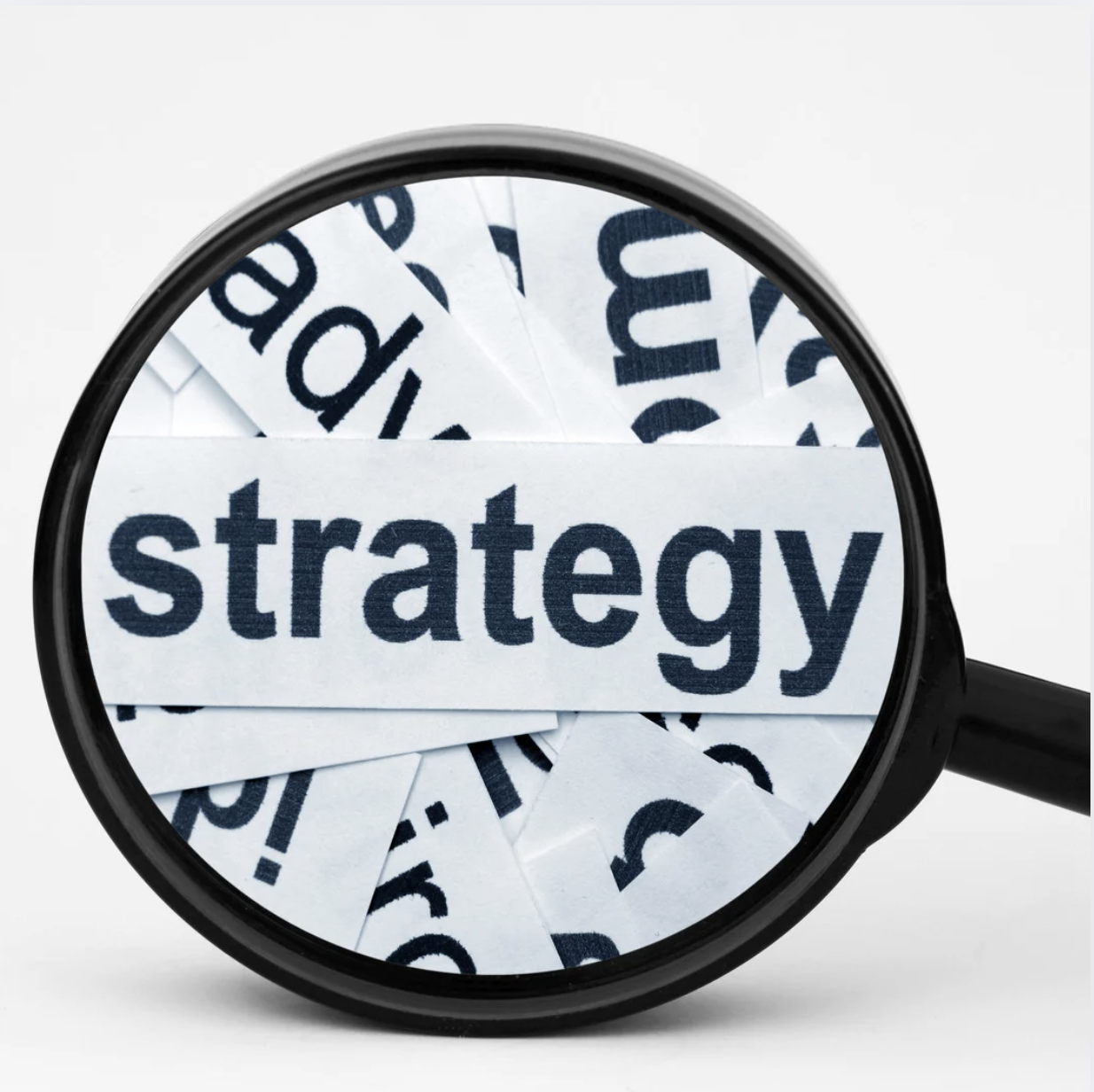Growing a Consumer Packaged Goods (CPG) brand can be both exciting and challenging, especially when financial metrics like Cost of Goods Sold (COGS) and retail pricing start to feel like an overwhelming sea of numbers. But these concepts aren’t just industry jargon—they’re the foundation for making profitable decisions that lead to sustainable growth. In this guide, we’ll break down the essentials of COGS, pricing strategies, and financial management tailored specifically for CPG startups.
Whether you're exploring new markets, aiming for national distribution, or establishing a scalable business model, this guide will provide actionable insights and practical tools to help you navigate the complexities of CPG financials. At Vdriven, we’re committed to empowering brands with the knowledge they need to grow and succeed—let's dive in and set your brand on the path to financial success.
Beyond the Basics: What is CPG Really About?
What is a CPG Brand? At its core, a CPG brand is a business that produces consumer goods with rapid turnover and high demand. These include food products, household items, and personal care products. For a startup in this space, understanding what CPG stands for goes beyond the literal meaning—it's about mastering a business model that thrives on fast-paced, volume-driven sales with tight margins.
The Hidden Complexities of CPG Business Models
CPG business models can seem simple but are riddled with nuances that can be challenging for startups. Here’s what you need to consider:
- Working Capital Challenges: Cash flow is critical. In CPG, you’re often working with payment terms of 90-120 days, meaning cash may be tied up while your products are on store shelves or in warehouses.
- Retail Deductions: Retailers often take 2-3% of your revenue in unexpected deductions for issues like late deliveries or damaged products.
- Marketing Investment: CPG marketing demands a high spend, typically 10-25% of revenue, to keep up with competitors and reach consumers effectively.
- Distribution Costs: These can consume up to 30% of your gross margin, making efficient logistics crucial to maintaining profitability.
For startups, this reality means planning is essential, especially when navigating these hurdles with limited resources.
The Real Story Behind COGS in Modern CPG
Breaking Down True Costs in CPG Food
Understanding the true Cost of Goods Sold (COGS) is the foundation of financial success for any CPG brand. For new founders, there’s often a tendency to underestimate COGS by 20-30%. Here’s what you need to consider:
- Direct Costs
- Raw Materials: Includes ingredients, packaging, and transportation, each with fluctuating prices.
- Production Labor: Costs of wages, overtime, and even benefits for those involved in manufacturing.
- Co-packer Fees: Co-packers handle production but often charge fees that can add to your COGS.
- Quality Testing: Essential for food industry compliance, but it comes at a cost.
- Packaging Materials: Retail packaging design affects costs, and eye-catching packaging often demands premium materials.
- Hidden Costs
- Waste and Spoilage: Typically 3-5% of total COGS, especially significant for perishable goods.
- Quality Holds: Sometimes products are held for additional quality checks, adding storage fees.
- Minimum Order Quantities: Suppliers often have minimums that may exceed immediate production needs, affecting your cash flow.
- Ingredient Variations: Seasonal and regional changes can cause price spikes.
- Storage Costs: Delays in production can lead to additional warehouse fees.
- Scaling Considerations
- Volume Discounts: Bulk orders can bring costs down, but that may require upfront capital.
- Secondary Packaging: Some retailers require unique packaging or display-ready formats, increasing costs.
- Regional Requirements: Adapting to local regulations or preferences in various markets can lead to additional expenses.
COGS Management is essential to remain competitive and profitable. As a food and beverage consultant might advise, track each cost category meticulously and adjust your pricing strategy as your brand grows.
Financial Survival Guide for Early-Stage CPG Brands
Managing Cash Flow in a Startup CPG Brand
For a CPG startup, effective cash flow management can be the difference between survival and success. Here’s what to keep in mind:
- Initial Production Costs: Expect your first production run to cost between $25,000 and $50,000. This includes raw materials, labor, and packaging.
- Marketing Budget: Allocate a minimum of $10,000 monthly for marketing to build brand awareness and sustain consumer interest. Early stage brands typically should allocate 15-25% of net sales for marketing.
- Working Capital: Aim to have 3-4 times your monthly revenue in working capital. This buffer allows you to handle unexpected costs and maintain smooth operations.
- Safety Stock Investment: Having 2-3 months of inventory on hand can prevent stockouts and ensure steady fulfillment, especially if production delays arise. This depends on the type of product, whether it's shelf stable, or perishable, or what is the established shelf life for the product.
Deductions Management: The Silent Profit Killer
Deductions in the CPG industry can quietly chip away at your profits. Here’s how to prepare:
1. Types of DeductionsIntentional Deductions: The Cost of Doing Business Think of intentional deductions as the necessary investments in your market presence. These are pre-planned reductions in revenue that include:
- Advertising expenses
- Promotional costs
- Sales allowances
- Markdown strategies
These aren't losses, they're calculated investments. Just as you invest in your company's future, these deductions are strategic expenditures designed to generate long-term market positioning and customer engagement. Accept them as part of your business ecosystem, not as setbacks.
Preventable Deductions: Your Internal Efficiency Alarm Preventable deductions are red flags signaling operational inefficiencies. They emerge from:
- Delivery inconsistencies
- Inventory management errors
- Shipping documentation mistakes
Consider these deductions as your business's diagnostic system. They're not just financial penalties; they're precise indicators of where your operational machinery needs fine-tuning. A meticulous self-audit can transform these deductions from financial wounds to opportunities for systemic improvement.
Operational excellence isn't about perfection; it's about continuous, incremental improvement. These deductions are your roadmap to streamlining your business processes.
Unauthorized Deductions: Your Financial Battleground Unauthorized deductions are essentially financial intrusions. They represent:
- Invoicing discrepancies
- Customer-initiated chargebacks
- Payment term violations
- Inbound goods errors
Your stance here should be uncompromising. These are not negotiable reductions but potential financial violations. Your goal: recover 100% of these deductions.
In business, protecting your capital is as crucial as growing it. Unauthorized deductions are direct attacks on your financial integrity. Develop robust systems, clear communication protocols, and unwavering follow-up mechanisms to challenge and recover these funds.
Deductions aren't just accounting entries; they're strategic signals. Intentional deductions are investments, preventable deductions are efficiency indicators, and unauthorized deductions are challenges to be confronted.
Your job as a business leader is not to eliminate all deductions—that's impossible—but to understand them, strategically manage them, and use them as tools for continuous business optimization.
2. Implementing Deduction Management Best Practices-
- Documentation Systems: Use deduction management software to create audit trails and track proof of deliveries.
- Prevention Strategies: Regular audits and staff training on retailer requirements can prevent common issues, while automated checks can catch discrepancies early.
Effective deduction management can help save 1-2% of your total revenue, a considerable sum for a startup.
Strategic Pricing for Growth
Pricing your CPG product correctly is an art as much as a science. Your price needs to cover costs, provide value to consumers, and allow room for promotional discounts. Here’s a breakdown:
- Cost-Based Foundation
- COGS and Operating Expenses: Your price must at least cover these basics.
- Channel Margins: Retailers and distributors usually expect 30-50% margins.
- Trade Spend: Expect to allocate 15-20% of gross sales for promotions and discounts.
- Market-Based Adjustments
- Competitive Analysis: Research similar products to understand acceptable price ranges.
- Channel Requirements: Some channels, like premium stores, may support higher prices.
- Geographic Considerations: Price sensitivity can vary by region, so tailor accordingly.
- Value-Based Optimization
- Brand Positioning: Ensure your pricing reflects your brand’s value proposition.
- Consumer Willingness to Pay: Conduct surveys to gauge price expectations.
- Category Expectations: Be aware of pricing standards within your product category.
Your CPG pricing strategy should balance consumer expectations with financial goals, allowing you to remain competitive and profitable.
Optimizing Operations for Scale
Leveraging Virtual Support Strategically
For startups looking to grow without extensive overhead costs, virtual assistants can be invaluable. Here’s how virtual secretarial services can boost efficiency:
- Back Office Operations
- Purchase Order Processing: Virtual assistants can handle repetitive tasks like order processing.
- Deduction Tracking: Keeping track of deductions can be time-consuming; a dedicated assistant can handle this efficiently.
- Customer Service Support: A reliable virtual assistant can manage customer inquiries and resolve issues.
- Data Management
- Sales Reporting and Inventory Tracking: A virtual assistant can maintain up-to-date records, crucial for managing stock levels.
- Competitor Monitoring and Market Research: They can track competitor activities and consumer trends, keeping you informed.
Consider offshore virtual assistants for cost-effective support across essential operational tasks.
Modern CPG Marketing Strategy Essentials
Creating a Balanced CPG Marketing Strategy
Marketing in the food industry has evolved, with digital channels now taking center stage. Here’s how to allocate your marketing budget effectively:
- Digital Presence (40%)
- Social Media and Influencer Partnerships: Engage consumers on platforms where they spend time.
- Email Marketing and SEO Optimization: Build long-term customer relationships through regular content and improve discoverability.
- Trade Marketing (35%)
- In-Store Promotions and Shopper Marketing: Boost visibility through strategic in-store displays.
- Display Advertising: Advertise directly to shoppers to drive conversions.
- Brand Building (25%)
- Consumer Packaged Goods Advertising: Use ads to promote brand awareness.
- Community Engagement and PR Activities: Build your brand’s reputation through public relations and engagement with your consumer base.
The right food marketing strategies will ensure your brand reaches the right audiences while optimizing ROI.
Expert Support: When and How to Get It
Choosing the Right Consultant in Food Manufacturing
Hiring a consultant can provide the expertise and connections you need to scale. Here’s what to look for:
- Hands-On CPG Industry Experience: Look for consultants with a proven track record in the CPG environment.
- Startup-Specific Knowledge: Some strategies work well for established brands but may not apply to startups.
- Channel Relationships and Financial Acumen: Consultants with strong retailer connections and a solid understanding of financial management can provide added value.
For example, consultants in food manufacturing can offer strategic advice on scaling, cost control, and product positioning.
Making the Leap: Your Next Steps
Ready to transform your CPG brand’s financial performance? Consider consulting with firms like Vdriven, which specialize in guiding CPG brands toward profitability. With deep industry knowledge and startup-centric solutions, you can create a clear action plan that scales with your growth.
By mastering COGS, pricing strategies, deduction management, and efficient marketing, emerging CPG brands can thrive in a competitive market. With a focus on financial intelligence and operational efficiency, your brand is poised for sustainable success.
Luke Abbott
Luke is a Senior executive, consultant, and entrepreneur with experience in raising capital, accounting, CEO coaching, and retail domination best practices. As the President of Monterrey Provisions, he scaled and grew the company from $32M to $250M+ in revenue, and launched 3 startups along the way. His academic contributions as a Professor of Supply Chain at the University of San Diego have enriched his students with practical insights, preparing them as future business leaders. Currently, as CEO and Coach at Vdriven, Luke helps emerging brands in all aspects of retail.






